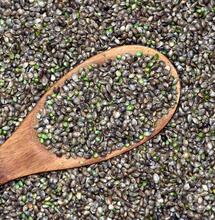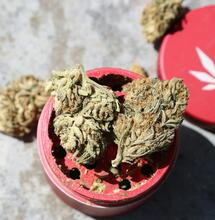Growing Hydroponic Yeast

Home gardeners generally grow yeast not for the yeast itself, but rather for what it adds to the nutrient solution.
Home gardeners generally grow yeast not for the yeast itself, but rather for what it adds to the nutrient solution.
|
Ginger is an easy-to-grow plant with a flavorful rhizome |
|
Ginger is an easy-to-grow plant with a flavorful rhizome |
|
Growing yeast hydroponically can be not only fun, but also tasty |
Although yeast is a fungus and not a plant, it can be grown using hydroponic principles. In a standard deep-water culture (DWC) setup, the plant is suspended over a nutrient solution and the roots are in constant contact with the solution. A simplified version of this concept can be used to grow yeast.
Yeast has fewer requirements than plants do. It does not use photosynthesis for development, so it does not require any specialized lighting. There is no top portion to have to suspend out of the nutrient solution and the nutrient solution does not have to be changed or aerated.
There are a variety of nutrient solutions that can be made for the yeast. They are generally made from water, some sort of sugar (to feed the yeast), an acid such as lemon juice (to adjust the pH), and, optionally, flavorings.
The water used for the solution should be pathogen free and sterilized by boiling or filtration, although distilled and RO water should not be used, as they can interfere with yeast growth. Using clean water and keeping utensils sterile can help to prevent unwanted pathogenic growth from ruining the garden in a bottle.
There are several different sugar sources that can be used to feed yeast: table sugar, fruit juice, honey, molasses and corn meal are popular choices for home yeast gardening. I recommend starting with table sugar as it is cheap, easy to acquire and useful for other things, in case you decide that yeast gardening is not for you after trying it.
Acids are added to nutrient solutions to lower their pH. Adjusting the nutrient solution with a small amount of lemon juice allows for a slight reduction in pH with an edible acid - and the flavor is a nice, subtle addition to the ginger.
Although it is possible to cultivate wild yeasts from sources such as the skin of the ginger root, I prefer the simplicity of store-bought yeast. Specialty yeasts are available for discriminating gardeners, but regular baking yeast can be used. Flavorings such as ginger are often added, depending upon the taste desired.
Once the yeast has been added to the nutrient solution in a container, it will start to reproduce and populate the solution. Yeast consumes sugar and creates carbon dioxide and alcohol. If the intent is to harvest the alcohol, an airlock is used to allow the carbon dioxide to escape. If the intent of growing the yeast is to carbonate a beverage, then it is grown in a sealed container.
If alcohol is intended to be harvested, the container requires some method of venting the carbon dioxide to prevent pressure buildup. This allows the yeast to continue growing for longer, without bursting the container - this is often done with an airlock. A simple form of an airlock would be a hole in the cap that allows for a piece of tubing bent into an 'S' shape. The tubing is turned to the side (to fit the hole) and enough filtering liquid is added to the lower bend in order to create a seal.
When pressure from the carbon dioxide production builds up inside the container, it can escape by bubbling through the liquid in the bend. Since the pressure inside the bottle stays higher than pressure outside the bottle, it creates a one-way passage where the gas from inside can escape but contaminates from outside cannot enter (or at least are severely hindered).
Inexpensive plastic airlocks can be purchased from brewing supply stores. The rising bubbles (or lack thereof) can be used as an indication of harvest ripeness. The nutrient solution itself may be harvested, as in the instance of beer and wine, or a concentrate may be made through distillation as is done with vodka, whiskey, rum, etc.
If the yeast is sealed in an airtight container - such as in a capped two-liter bottle - with the nutrient solution, it will generate enough carbon dioxide to pressurize the container and carbonate the soda. Care must be taken when enclosing live yeast with sugar, however, as it can produce enough pressure to burst the container. This is also why I recommend using plastic containers, as the flexible sides allow for the amount of pressure inside the bottle to be judged (by squeezing them).
The yeast can generate enough pressure to break plastic or glass bottles, so care must be taken. When opening the bottles for use or to relieve pressure, open them over the sink to help with containment in the event that the bottles have become over-carbonated.
When grown in this way, the amount of alcohol generated is small and usually considered negligible. Sodas made this way have smaller bubbles than ones made by carbon dioxide injection.
There are many methods of growing and harvesting, but here is one of my favorites:
Herb's Magic Potion Recipe
2 liters water, sterile (but not RO)
2 cups sugar
2 tablespoons lemon juice
2 tablespoons fresh ginger cut into small chunks
1/8 teaspoon yeast
Simmer the ginger in two cups of water for ten minutes. Strain the ginger from the fluid (optional). Return to a boil and add two cups of sugar. Stir until dissolved. Boil for one minute, then remove from heat. Add two tablespoons of lemon juice and enough water to speed cooling to room temperature. With a funnel, transfer the liquid into the two-liter bottle and add enough additional water to fill within an inch or so of the cap. Add 1/8 teaspoon yeast; seal with cap and shake well.
Every day for the next few days, squeeze the sides of the bottle to check the pressure. Once the sides are firm, chill the bottle in your refrigerator. Once chilled, open as needed to prevent excess pressure.
Add tincture to desired strength and fruit juice to desired flavor (optional). Serve over ice.
As to the question of what makes the potion magical: if you cannot see the magic in homegrown ginger in homemade ginger ale with a dash of homegrown Cannabis in homemade tincture, I probably cannot explain it to you.



